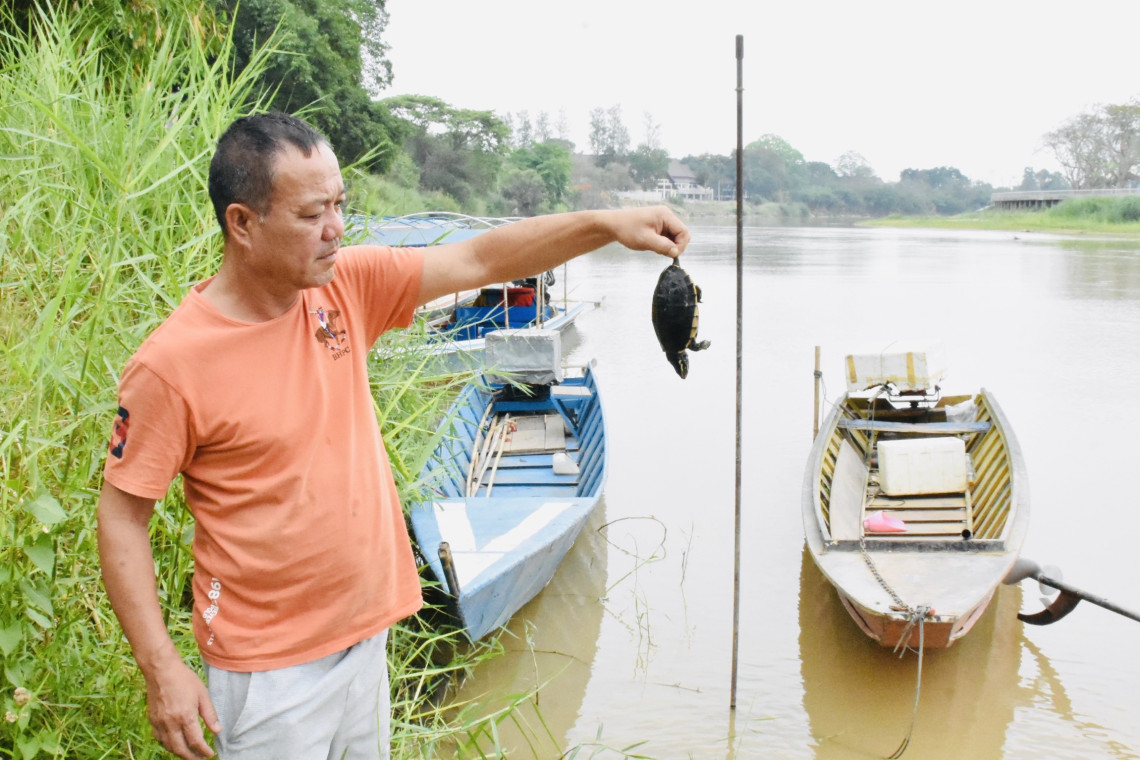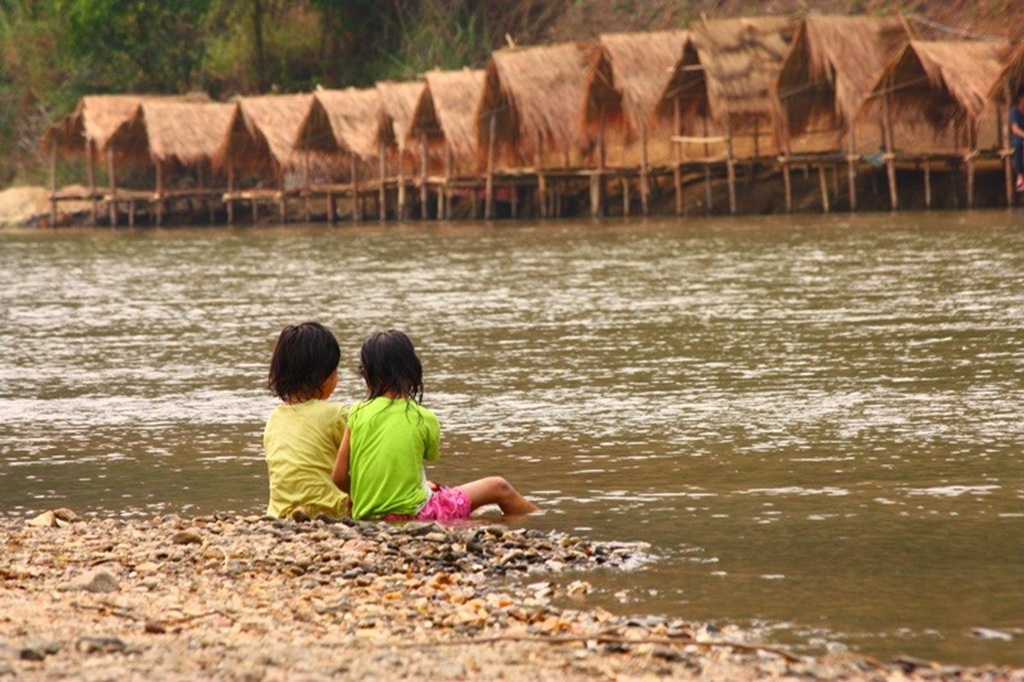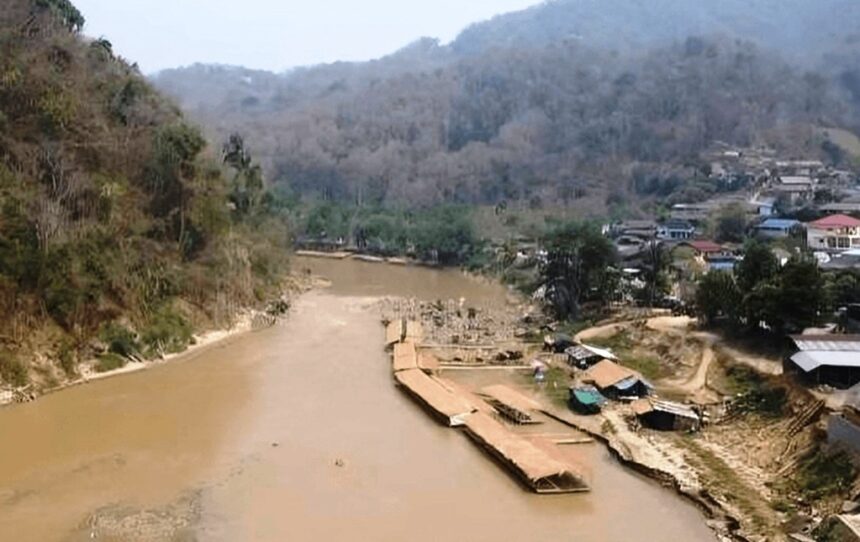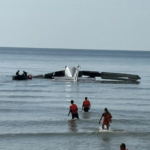Chiang Rai—Recent tests on sediment samples from the Kok River in Chiang Rai and Mae Ai District, Chiang Mai, have shown that several heavy metals, especially arsenic, are above accepted limits.
Experts warn that these contaminants could enter the food chain and pose health risks to people who eat local fish. Authorities have now ordered close monitoring of the situation.
On 25 April 2025, the Office of Environmental and Pollution Control Region 1 (Chiang Mai) released a report on sediment quality in the Kok River. Between 31 March and 1 April, officials collected sediment samples from six locations after unusual water discolouration was reported.
The samples were tested for ten heavy metals: arsenic, cadmium, copper, iron, lead, manganese, nickel, chromium, zinc and mercury.
The report highlights that arsenic levels were above the safety limit at all six sites. The most severe reading came from the Thai-Myanmar border in Mae Ai, Chiang Mai, where arsenic measured 33 mg/kg, which is above the safety level for bottom-dwelling animals.
Regular consumption of fish from this area could affect human health, causing symptoms like numbness in fingers and toes, thickened dark skin, and irregular heartbeats.

At the other sites, arsenic ranged from 20 to 22 mg/kg, which is double the recommended limit of 10 mg/kg for protecting bottom-dwelling species. This could reduce the number and variety of these animals, upsetting the river’s ecosystem and affecting fish stocks.
Nickel was also found above the safe level at one location, near Mae Fah Luang Bridge in Mueang District, Chiang Rai, with a reading of 30 mg/kg (the limit is 23 mg/kg).
Chromium exceeded the standard at two sites: at the Kok River Bridge in Doi Hang and near Mae Fah Luang Bridge. Levels were 45 and 60 mg/kg, with the safe limit set at 43.4 mg/kg.
The sediment quality standard is designed to protect bottom-dwelling animals, which are key food sources for many fish. When heavy metals exceed safe limits, these animals may decline, reducing fish stocks and the overall health of the river.
The higher standard aims to protect human health by preventing these metals from building up in fish eaten by people.
Somporn Phengkham, an independent researcher, pointed out that these metals occur naturally but can become dangerous when soil is disturbed. With pollution found in both water and sediment, it’s important to check if these metals have reached the food chain.
Recent tests even found mercury in local fish, showing the process has started. Though the levels aren’t yet above the safety limit, more testing is needed, especially on fish and people who eat them often.
Somporn suggested that the next step is to check how much of these substances build up in the food chain, not just in fish but also in shellfish and edible plants from the river.

Ongoing monitoring is needed, especially for pregnant women and children, as they are most at risk. While water treatment systems can help reduce metals in tap water, there’s no similar system for natural foods. Local people need clear advice on which foods are safe to eat.
Immediate action and monitoring are needed. Somporn also called for a halt to any new, unregulated gold mining, as this could worsen the problem.
Assoc. Prof. Dr. Sathian Chantha, from Chiang Rai Rajabhat University and the Mekong River Basin Committee, explained that heavy metals in contaminated environments can end up in plants and animals, and eventually in humans who eat them.
When these substances build up in tiny river animals or plankton, they are then eaten by fish, and the metals accumulate up the chain. This is why there are strict standards for heavy metals in water and food from affected areas.
Chiang Rai’s provincial governor, Charin Thongsuk, confirmed the findings. He said the levels of heavy metals in sediment were above the recommended limits, matching previous water test results. For now, the amount of heavy metals in fish remains within the safe range.
The governor has directed all related agencies to keep monitoring the river closely. Fish and water samples will continue to be collected from areas outside the municipal boundary down to the river mouth, so local people can stay informed about contamination levels.
Charin added that while the situation is worrying, it isn’t yet at a crisis point for fish or human health. The province can’t ban people from using the river, but will keep giving advice and will continue regular testing until things return to normal.
Related News:
Chiang Rai Elephant Camp Sees an 80% Drop in Tourists Due to Arsenic in Kok River

Geoff Thomas is an award winning journalist known for his sharp insights and no-nonsense reporting style. Over the years he has worked for Reuters and the Canadian Press covering everything from political scandals to human interest stories. He brings a clear and direct approach to his work.













